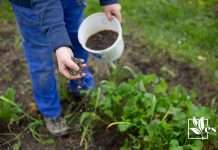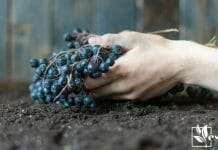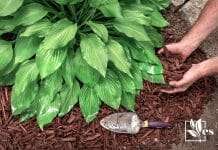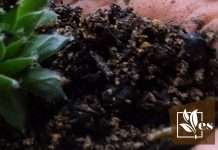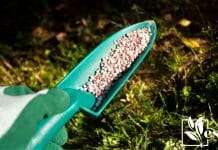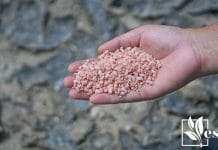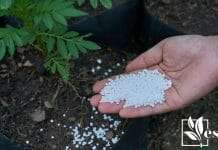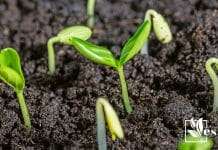Rock dust is a fine powder made from pulverized rock that has a variety of uses, both in agriculture and in industry. In the context of agriculture, it’s often regarded as a natural soil amendment offering a host of benefits, such as improving soil fertility and health.
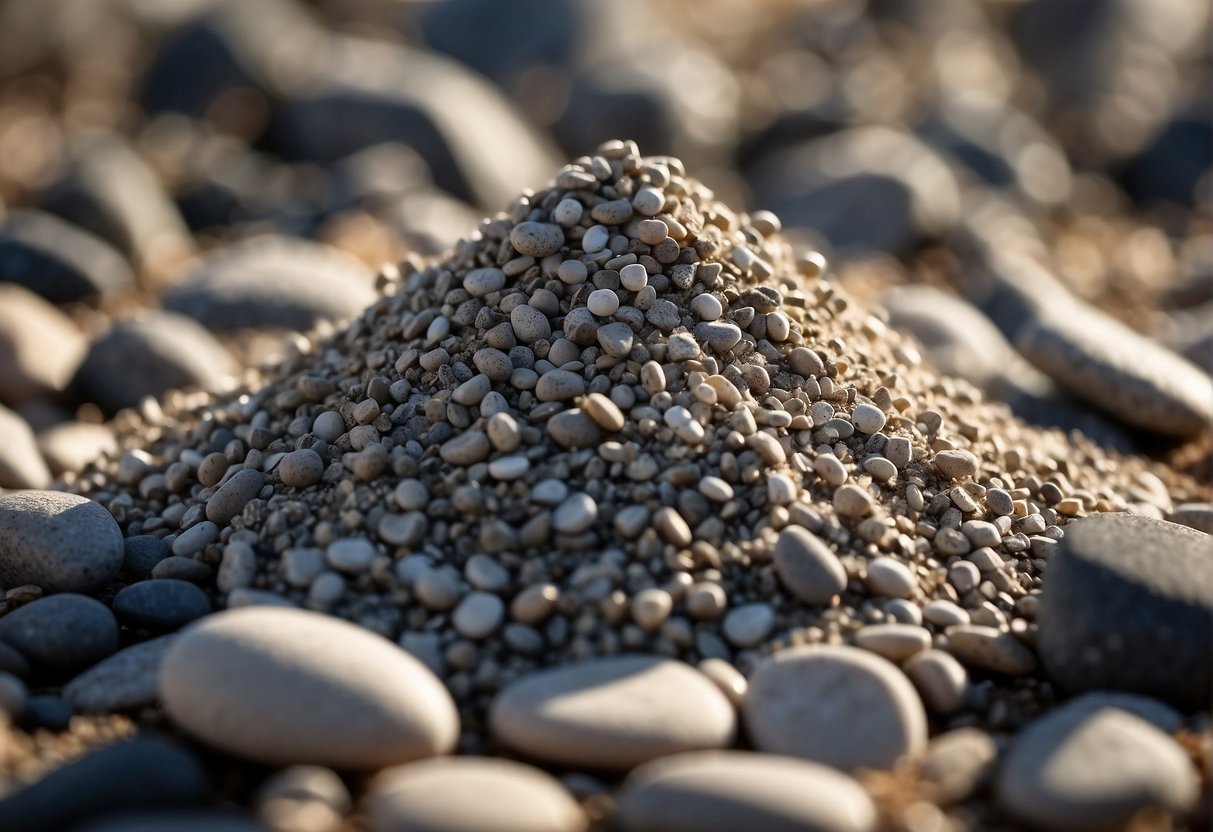
Having been used for over a century in coal mines to suppress explosive coal dust, rock dust today is better understood and utilized for its micronutrient content. The practice of adding rock dust to soil, which might include basalt or glacial rock types, is based on the premise that it reintroduces minerals into the soil, a process termed mineralization.
In gardening, rock dust is lauded for its ability to supply essential minerals and trace elements to plants, which can lead to improved growth and yields. Although it may not be suitable for all types of gardens, such as raised beds or potting mixes, the appropriate use of rock dust in outdoor beds can enhance the nutrient density and texture of the soil, promoting the vitality of garden ecosystems.
JUMP TO TOPIC
The Role of Rock Dust in Enhancing Soil Quality
As a gardener, I’ve found that enhancing soil health is pivotal for robust plant growth. Rock dust plays a critical part in this by replenishing essential minerals and improving soil structure.
Understanding Soil Amendments
Rock dust is a natural soil amendment containing a range of minerals and nutrients. When I incorporate it into my garden, the soil’s fertility significantly improves. It’s a non-synthetic addition that can enhance microbial activity, leading to more efficient nutrient cycling in the soil. These are the benefits I’ve observed:
- Imparts Essential Minerals: Reintroduces minerals like calcium and magnesium.
- Improves Soil Texture: Helps create a soil structure that supports aeration and water retention.
- Boosts Plant Health: Enhanced mineral content leads to healthier and more resilient plants.
Basalt as a Key Amendment for Gardens
Among the many types of rock dust, basalt rock dust has become a staple in my gardening. It’s derived from natural volcanic rock and contains a high concentration of silicon along with other trace elements. These qualities make it a superior choice for soil amendment:
- Silicon: Strengthens plant cell walls against pests and diseases.
- Trace Minerals: Provides a broad spectrum of essential nutrients.
In practice, I blend basalt rock dust into the soil before planting season, ensuring an even distribution and boosting soil productivity. Gardeners looking to practice organic and sustainable methods will find that basalt contributes to long-term soil and plant health.
Nutrient Content and Mineralization
In my experience with gardening, rock dust is essential for releasing minerals slowly over time, which transforms and enriches the soil, providing plants with needed nutrients. The key lies in the wide array of minerals found in rock dust such as basalt.
Beneficial Minerals for Plant Growth
- Silica
- Calcium
- Iron
- Magnesium
- Potassium
These elements are instrumental in strengthening plants’ structure and resistance to pests and diseases.
Improving Crop Yield and Plant Health
- Elevated microbial activity enhancing soil quality and plant health
- Enhanced root development resulting in robust plant growth
- Increased yield of fruits and vegetables with improved nutritional content
These outcomes are broadly supported by trials and my own experiences with rock dust application.
Practical Tips for Applying Rock Dust
Rock dust can significantly benefit your garden, but it’s essential to use it correctly. Ensuring even distribution and correct dosage maximizes the efficacy and minimizes waste.
How to Apply Rock Dust for Maximum Efficacy
When applying rock dust to my garden, I first determine the amount needed. Generally, I use about 1 tablespoon of rock dust per gallon of soil. I uniformly mix it into the top 4 inches of soil, ensuring thorough distribution. If I’m working with raised beds, I might sprinkle four tablespoons per 100 square feet directly onto the soil surface, working it in lightly with a rake. For my monthly soil amendment routine, I incorporate rock dust into the soil in smaller amounts, allowing the minerals to break down gradually and become accessible to plant roots.
Mix 1 tablespoon of rock dust per gallon of soil, or four tablespoons per 100 square feet for raised beds.
Considerations for Different Types of Soil
Each soil type requires a different approach to rock dust application. For my clay-rich soils, which tend to be compact and have poor drainage, I find that rock dust, specifically basalt rock dust, aids in loosening the texture and improving water retention. The minerals in the dust also become more available as the soil structure improves. In contrast, for more well-draining soils, rock dust is effective in replenishing essential minerals and maintaining fertility over time. When applying rock dust, no matter the soil type, I ensure that it doesn’t clump and is evenly distributed to avoid clogging and ensure that the plants receive a balanced nutrient supply.
- For clay soils: Basalt rock dust improves drainage and texture.
- For sandy or well-draining soils: Rock dust replenishes minerals and maintains soil fertility.



